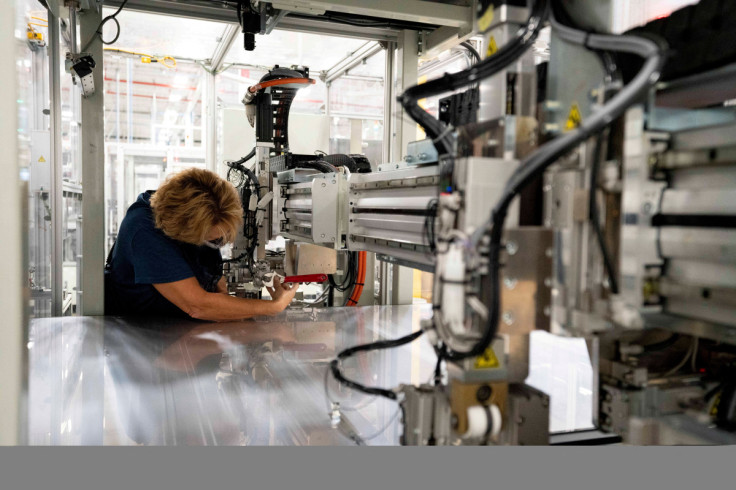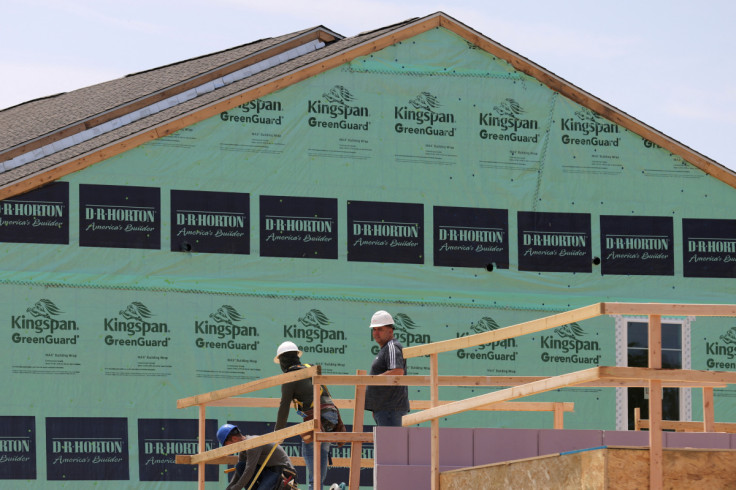U.S. Factory Output Solid In September; Builder Sentiment Slumps Further

Production at U.S. factories rose in September led by output gains in both durable and nondurable goods, indicating the manufacturing sector remains on reasonable footing despite the Federal Reserve's efforts to hamper demand - and lower inflation - through higher interest rates.
But the Fed's aggressive rate hike campaign has delivered another blow to the housing sector, with market sentiment among U.S. home builders sliding for the 10th month in a row in October as soaring mortgage rates and bottlenecks for building materials put new home purchases out of reach for many American consumers, prospective first-time buyers in particular.
The two data points out Tuesday illustrate the uneven impact the U.S. central bank's rate hikes are having so far on the economy.
Housing has emerged as the most-afflicted sector so far, with interest rates on the most popular type of U.S. home loan nearing 7% - the highest since 2006 - while sales of new and existing homes have tumbled by roughly 25% since January. But there's been little consistent hard data so far showing demand elsewhere in U.S. economy is falling to the degree needed to bring inflation materially lower from its four-decade-high peaks reached over the summer.
"Limited slack and continued strong demand will lead to higher prices," economists at Jefferies wrote. "The Fed cannot be happy about this as it shows they are further behind the curve than they thought and none of their moves to tighten policy this year have resulted in demonstrable progress toward getting inflation back down to target."
Manufacturing output rose 0.4% last month, keeping pace with an upwardly revised 0.4% gain in August, the Federal Reserve said on Tuesday. Economists polled by Reuters had forecast factory production would rise 0.2%. Output increased 4.7% from a year earlier.
Overall industrial production rose 0.4%, after slipping 0.1% the prior month. Economists polled by Reuters had estimated a 0.1% increase.
Capacity utilization, a measure of how fully producers are using their resources, rose to 80.3% last month from an upwardly revised 80.1% in August.
The figures continued the recent pattern of "hard data," such as government reports on factory orders and industrial production, running stronger than the "soft data," such as purchasing manager surveys.
Motor vehicle and parts production, which has experienced notable volatility because of a global shortage of the semiconductors used for vehicle operating systems, rose 1% after falling 1.5% in August and rising 3.6% in July.
"Autos have often been the swing factor for manufacturing since the beginning of the pandemic due to semiconductor shortages," Jefferies economists Thomas Simons and Aneta Markowska said. "However, the strength this month is significantly more broadly-based than usual."
HOUSING HIT
Since March, the U.S. central bank has lifted its benchmark policy rate from near zero to a range of 3.00%-3.25%, and the fed funds rate is now expected to end the year in the mid-4% range with inflation yet to show signs of abating materially.
The rate hikes have torpedoed activity in the housing sector, and Wednesday's data from the National Association of Home Builders reinforced that.
The NAHB/Wells Fargo Housing Market index dropped eight points to 38 this month. With the exception of the short-lived plunge during the spring of 2020 when the country locked down during the first wave of COVID-19, this was the lowest reading since August 2012. A reading above 50 indicates that more builders view conditions as good rather than poor.
Economists polled by Reuters had forecast the index at 43.
The government on Wednesday will publish the September figures for the number of new homes starting construction and volumes of permits being issued for new home building projects, both of which have declined sharply this year. Both are estimated to have fallen further last month.
"This will be the first year since 2011 to see a decline for single-family starts," NAHB Chief Economist Robert Dietz said in a statement. "And given expectations for ongoing elevated interest rates due to actions by the Federal Reserve, 2023 is forecasted to see additional single-family building declines as the housing contraction continues."
"While some analysts have suggested that the housing market is now more 'balanced,' the truth is that the homeownership rate will decline in the quarters ahead as higher interest rates and ongoing elevated construction costs continue to price out a large number of prospective buyers," Dietz said.
The survey's measure of current sales conditions dropped nine points to 45. Its gauge of sales expectations over the next six months slumped 11 points to 35. The component measuring traffic of prospective buyers fell six points to 25.

© Copyright Thomson Reuters 2024. All rights reserved.



















